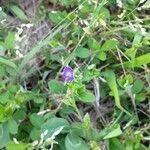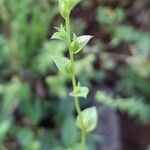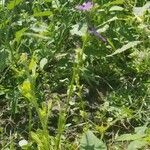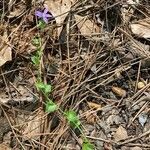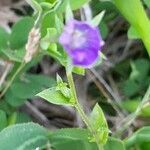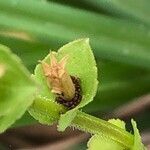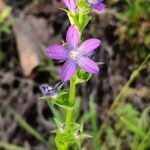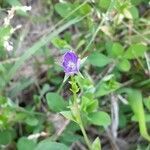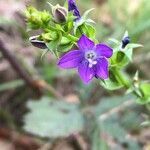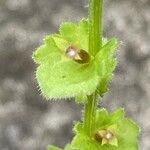Stems erect or ascending, 15-60 cm tall, simple or branched, ribbed, glabrous or scabrous mostly on ribs. Leaves ovate, suborbicular, or elliptic, sometimes lanceolate toward apex, 0.6-2 cm, glabrous or shortly hispid on veins and margins, base clasping cordate, obtuse, broadly cuneate, or rounded, margin shallowly entire, crenate, serrate, or dentate, apex rounded, obtuse, or acute, sometimes acuminate. Flowers 1-3 in axil, sessile. Hypanthium campanulate, oblong, or obconic; calyx lobes of upper flowers (later ones) 5, rarely 4, rigid, triangular to lanceolate; lower flowers (earlier ones) smaller, with lobes 3 or 4, narrowly triangular, triangular, or lanceolate. Corolla bluish purple or rose-purple, rarely white, rotate, 8-10 mm; earlier flowers rudimentary. Capsule oblong, 4-10 mm, opening by lateral valves. Seeds light brown to brown, smooth. Fl. and fr. Apr-Jul. 2n = 28, 56.
More
Erect, 1–10 dm, simple or with few long branches, often floriferous to near the base, ± scabrous or hairy at least below; lvs (and floral bracts) sessile and cordate-clasping, rotund-ovate or broader, usually toothed, palmately veined, 0.5–3 cm, nearly as wide, or wider, or some of the lower ones narrower; cal cleft to the hypanthium, the lobes narrowly triangular-acuminate, 5–8 mm in open fls; upper fls with deep purple to pale lavender cor 8–13 mm, the tube 2–4 mm; frs oblong or narrowly obovoid, those of cleistogamous fls 4–7 mm, those of open fls to 1 cm, all bilocular or trilocular; pores usually 1–1.5 mm below the tip of the fr; seeds 0.5–0.6 mm; 2n=60. Various habitats, often in disturbed sites; Me. to B.C., s. to trop. Amer. May, June. (Specularia p.)
